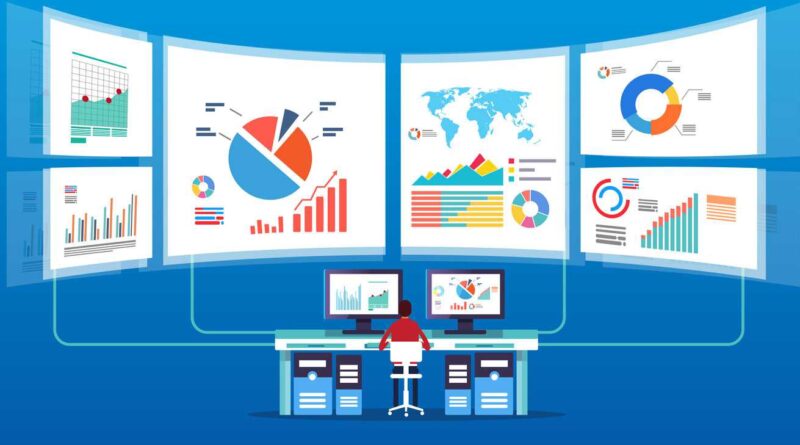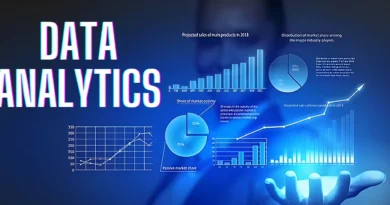Data & Learning Analytics: Pathway to Improved Student Outcomes in 2024
Unleashing the Power of Data: How Learning Analytics Can Transform Education
The Power of Data and Learning Analytics in Education
Education is a crucial aspect of our society, and it is constantly evolving. With technological advancements, there has been a shift towards using data and learning analytics to improve student outcomes.
The use of data analytics in education allows for the collection, analysis, and interpretation of vast amounts of student information that can be used to identify patterns and trends. This information can then be used to make informed decisions that lead to more effective teaching practices.
Learning analytics, on the other hand, deals with the measurement, collection, analysis and reporting of data about learners in an educational context. It can be used to track progress over time which helps identify potential roadblocks early on before they become insurmountable challenges for learners.
By using predictive models based on past performance data from students with similar learning histories or profiles we can predict future performance and allow teachers to intervene at key points before a student begins to struggle. The possibilities are endless when it comes to utilizing these tools in education.
They enable educators to personalize instruction by tailoring learning experiences based on individual learner needs or preferences – which leads us to ask: What exactly are the benefits? And how do we ensure everyone benefits from them?
What are Data and Learning Analytics?
Data and learning analytics are two key tools in the field of education that have become increasingly important over the last decade. Put simply, data analytics involves collecting, analyzing, and interpreting data to identify patterns or trends with the goal of making better decisions. Learning analytics, on the other hand, is a subset of data analytics that specifically focuses on using data to improve teaching and learning outcomes.
Definition and Explanation of Data Analytics
At its core, data analytics is about using numbers to make better decisions. In education, this means collecting a variety of different types of information about students – academic performance, attendance records, behaviour reports – and then using statistical tools to identify patterns or trends. For example, if we notice that students who miss more than five days in a semester tend to have lower grades than those who don’t miss any days at all, we might use this information to encourage better attendance among our students.
There are many different ways that schools can use data analytics to make informed decisions about student outcomes. Common applications include predicting which students are at risk for dropping out early so they can be provided additional support; identifying which classes or programs are most effective for student success; and evaluating teacher performance based on their impact on student learning.
Definition and Explanation of Learning Analytics
Learning analytics is a subset of data analytics that focuses specifically on using information related to teaching and learning outcomes with the goal of improving them further. This often involves tracking individual student progress over time – for example by measuring their performance on assessments or recording the amount of time they spend interacting with educational materials online.
One key difference between traditional data analytics approaches and learning analytics is that in the latter case, there is often much more emphasis placed on personalized feedback rather than group-level reporting or evaluation. This means that educators may need to be trained in new techniques for analyzing data and interpreting results, particularly when it comes to providing tailored support to individual students.
The Benefits of Data and Learning Analytics in Education
Improved Student Performance
One of the most significant benefits of using data and learning analytics in education is the potential to improve student performance. By collecting and analyzing data on student progress and behaviour, educators can identify areas where students may be struggling and adjust their teaching strategies accordingly. For example, if a teacher notices that a large number of students are struggling with a particular concept or skill, they can modify their lesson plans to provide additional support in that area.
Additionally, data analytics can help educators identify patterns in student behaviour that may be affecting their academic success. For example, if students are consistently absent from class or fail to turn in assignments on time, teachers can intervene early to address these issues before they spiral out of control.
Personalized Learning Experiences
Another significant benefit of using data and learning analytics in education is the ability to provide personalized learning experiences for each student. By collecting data on each student’s individual strengths, weaknesses, interests, and learning style preferences, educators can tailor their instruction to meet the unique needs of each learner. For example, a teacher could use data analytics tools to identify which students are struggling with specific concepts or skills and then provide targeted interventions or extra practice opportunities.
Alternatively, a teacher could use learning analytics tools to track how each student responds to different types of instructional materials (e.g., videos versus text-based content) and then adjust their teaching approach accordingly. By providing personalized learning experiences tailored to each student’s needs and preferences, educators can help maximize each learner’s potential while also fostering engagement and motivation.
Early Identification of Struggling Students
One challenge that many educators face is identifying struggling students early enough so that interventions can be put into place before it’s too late. However, the use of data analytics tools allows teachers to monitor key indicators of student success and identify students who may be at risk of falling behind.
For example, if a teacher notices that a particular student’s grades have dropped significantly over a short period of time or that they are consistently struggling to complete assignments, they can intervene early by providing additional support or working with the student’s parents to develop an action plan. By identifying struggling students early and intervening quickly, educators can help prevent students from falling behind academically and improve their chances of success in school.
Enhanced Teacher Effectiveness
Data and learning analytics can help enhance the effectiveness of teachers themselves. By providing educators with real-time feedback on their instructional strategies and their student outcomes, data analytics tools allow teachers to make more informed decisions about how best to support their learners. For example, if a teacher notices that certain instructional methods are not working well for their students, they can try different approaches until they find one that works better.
Additionally, by using data and learning analytics tools to monitor student progress over time, teachers can identify areas where they may need additional professional development or training to improve their effectiveness as educators. Overall, the use of data and learning analytics in education has the potential to revolutionize the way we teach and learn by providing personalized support for each learner while also improving overall student outcomes.
Examples of Data and Learning Analytics in Action
Use Cases for Data Analytics in Education
Data analytics is rapidly becoming a vital tool for educators to predict student success and identify at-risk students. By analyzing student data, educators can determine which students may need additional support or interventions to succeed academically. For instance, data analytics can help identify which specific concepts a student struggles with the most, allowing teachers to offer targeted assistance.
Additionally, it can help educators understand how their students are progressing through the curriculum and adjust their teaching strategies accordingly. Another use case for data analytics in education is predicting student performance on standardized tests.
Through the analysis of student data such as attendance records, grades, and homework completion rates, predictive models can be created that estimate a student’s likelihood of passing particular exams or achieving certain scores. This information aids educators in identifying students who may require additional support to achieve greater academic success.
Use Cases for Learning Analytics in Education
Learning analytics provides insights into individual learners’ progress throughout the educational journey by gathering data from various sources like learning management systems (LMS), social interactions between learners and instructors/peers alike, software applications etc. This information helps instructors gain an understanding of how well individuals are understanding course content. For example, one major use case for learning analytics is tracking student progress during online courses through LMS platforms like Moodle or Blackboard Learn.
LMS-generated reports provide information about specific areas where learners might be struggling with content or particular assignments. Instructors should then have the ability to personalize feedback based on these insights to ensure that each learner gets maximum benefit from these educational tools.
Another use case for learning analytics involves providing personalized recommendations based on previous performance trends and choices made by individual learners if they engage with interactive course materials such as videos or quizzes online within the LMS platform. These personalization efforts will improve learner engagement and success rates.
Challenges to Implementing Data and Learning Analytics
Privacy Concerns: Protecting Student Data
One of the biggest challenges to implementing data and learning analytics in education is privacy concerns. Critics fear that student data could be misused, or that students’ personal information could be exposed to malicious actors.
These concerns are not unfounded, as there have been cases where student data has been mishandled or stolen. To address these concerns, it is important for schools and districts to have clear policies in place around the use of student data.
This includes establishing protocols for who can access the data, how it can be used, and how long it will be retained. It’s also important to communicate these policies clearly to parents and students so they understand how their information will be used.
Technical limitations: Getting the Right Tools in Place
Another challenge schools face when implementing data and learning analytics is technical limitations. Collecting and analyzing large amounts of data requires sophisticated tools and infrastructure. Unfortunately, many schools don’t have the necessary resources to invest in these tools.
To overcome this challenge, schools may need to partner with tech providers or other organizations that can help them collect and analyze their data. This may involve investing in new hardware or software, as well as training staff on how to use it effectively.
Resistance to Change: Overcoming Skepticism
A final challenge schools face when implementing data and learning analytics is resistance to change. Some educators may view these tools as intrusive or unnecessary, while others may simply prefer more traditional methods of teaching. To overcome this challenge, school leaders need to communicate the benefits of using these tools clearly and convincingly.
This may involve providing evidence from other districts that have successfully implemented similar programs, or working closely with teachers who are excited about the potential of using these tools in their classrooms. By working collaboratively and communicating effectively, schools can overcome these challenges and begin reaping the benefits of data and learning analytics.
Best Practices for Implementing Data and Learning Analytics in Education
Collaboration is Key
Implementing data and learning analytics in education requires input from various stakeholders, including educators, administrators, IT professionals, and students. Collaboration between these groups is crucial to ensure that the implementation of data analytics is effective and serves the needs of all involved parties. Educators can provide insights into how analytics can be incorporated into the classroom to benefit their students’ learning experience.
Administrators can provide guidance on how best to implement data analytics at a school or district level, while IT professionals can offer technical expertise for setting up the necessary infrastructure. Involving students in discussions regarding their data privacy rights will help ensure the ethical use of student data.
Clear Communication is Essential
To effectively implement data and learning analytics in education, it is important to communicate clearly with all stakeholders about the purpose and benefits of using these tools. This will help reduce any concerns or resistance to change that may arise. Communicating with parents about their children’s progress through regular reports or parent-teacher meetings can also help build trust between them and educators.
Moreover, clear communication also means ensuring that language used around these new technologies must be understandable by everyone involved – sometimes easy-to-understand explanations are necessary when introducing terms such as “machine learning” or “predictive modelling” for instance. It’s essential that everyone understands what they’re working with so that implementation can proceed smoothly.
Ethical Use of Student Data
Teachers have an ethical responsibility to protect student privacy while effectively using student data for improving educational outcomes. It is important to ensure that policies are in place regarding the collection, storage, access, sharing and destruction of student data – this should include a detailed explanation of how security measures are implemented so unauthorized personnel cannot access sensitive information. Furthermore, it’s imperative we teach students what kinds of data are collected, why it is collected and how it will be used in an age-appropriate manner.
It’s important to establish trust with students – they must know that their data will not be used against them. Once again, clear communication and transparency are key here.
Conclusion: The Future of Data & Learning Analytics in Education
The Potential Impact on Education as a Whole
The future of education is characterized by the increasing use of technology in the classroom. Schools today function as digital communities and the use of data and learning analytics is transforming how education is administered. By leveraging data analytics, educators can tailor instruction to individual students’ needs, helping them succeed academically and putting them on track for successful careers.
The potential impact of data and learning analytics is vast. For example, it can lead to more effective teaching practices that help students learn better.
Moreover, it can help educators identify areas where they need to improve their instruction so they can create more effective lessons for their students. With these insights at their disposal, schools will be able to make informed decisions about which instructional strategies best fit their student population’s needs.
Call to Action
The use of data and learning analytics in education provides numerous benefits for both students and educators alike. As such, there is a need for investment in this area from policymakers at all levels of government. Educators also have a role to play by embracing new technologies and seeking out training opportunities that will enable them to effectively incorporate data analysis into their teaching practices.
The integration of information technology into classroom instruction requires fundamental changes in how we approach teaching and learning – but these changes are necessary if we are going to prepare our students for the demands of a rapidly changing world. The implementation of data and learning analytics promises significant improvements to student outcomes.
By leveraging technology, teachers can personalize learning experiences while enhancing teacher effectiveness through early identification of struggling learners – ultimately leading to improved academic performance. As we move forward with these tools available at our fingertips today, let us embrace what is possible tomorrow through continued investments in this critical area that will shape the future of education for generations to come.




Pingback: How Data Analytics is Revolutionizing Education